Prevent Drainage and Soil Erosion—This is a widespread problem among homeowners, compromising the health and stability of their landscaping. When left unchecked, erosion can cause more serious problems, such as uneven terrain, weakened building foundations, and the loss of precious landscaping elements.
According to some estimates, nearly a third of the nation’s topsoil has been lost over the last century and a half. Topsoil erosion affects soil quality and causes downstream issues such as pollution and damage to nearby ecosystems.
Whether you’re trying to manage a small backyard at your home or own and operate a 100-acre tree farm, you may face soil erosion challenges. This problem affects property owners all over the world, and it occurs when inclement weather, such as strong winds, rainfall, runoff, flooding, ice melt, and other conditions move the top layer of sediment, which includes topsoil, gravel, and even larger rocks, depleting the soil of nutrients and peeling away the landscape layer by layer.
In this blog, we will discuss advanced drainage system installation methods that help with drainage and erosion control and preserve the beauty and integrity of your landscape.
Effective Methods for Drainage Control:
Implementing adequate drainage systems is fundamental for preventing and controlling soil erosion. Directing excess water away from your landscaping and decreasing runoff protects your yard from quick erosion and damage. Below are some prominent drainage options to consider:
French Drain: A French drain installation is a perforated pipe that diverts water away from a problem area. It is often constructed in a gravel-filled trench. This trench technique helps reduce soil saturation, which relieves pressure on your landscape and prevents erosion.
Channel Drains: Channel drains are extended, narrow grates positioned at ground level to capture surplus runoff. They can be erected along driveways, sidewalks, or in the yard to keep water from clogged drains, pooling, and causing erosion.
Dry Creek Beds: Dry creek beds, while natural and aesthetically beautiful, can also be useful landscape drainage solutions. They serve as a channel for rainwater to flow through during heavy rains, directing water away from sensitive regions and lowering erosion risk.
Dry Wells: A dry well manages excess water flow caused by heavy rain or other causes. It collects and disperses water into the ground, avoiding pooling or floods.
Whatever drainage system you choose, working with a professional firm like Outdoor Makeover and Living Spaces will guarantee that it is planned and installed to provide the best results for your specific landscape needs. Our team of expert yard drainage contractors understands and addresses issues like water runoff, rain damage, soil loss, and water runoff at early stages, and provides possible solutions.
Are you looking for French Drain installation services in Atlanta?
Effective Strategies for Erosion Control
Physical Methods:
Physical methods for preventing erosion include using obstacles like boulders, sediment control logs, perimeter fences, and vegetation. Terracing and contouring can also help reduce erosion on sloping land. Geosynthetics contribute significantly to erosion management by improving your site’s performance during major stormwater events. Whether the solution is permeable (Turf Reinforcement Mats) or impermeable (Hard Armor Solutions), the goal is the same: reduce soil loss, slow runoff velocity, and retain the geometry and overall integrity of the system.
Chemical Stabilization:
Chemical stabilization involves employing polymers and cement to bind soil particles and prevent erosion. Pesticides and herbicides can also help control vegetation that causes erosion. These components help Hydraulically Applied Mulches connect to the soil surface while also maximizing the conditions for your seed to thrive behind the mulch’s protective layer.
Vegetation:
This process refers to the plants and trees that grow in a specific location. Vegetation is an essential component of the biosphere, serving many roles at various spatial scales. Vegetation can protect a site from erosion by promoting soil stability and slowing erosion. Vegetation also holds the soil together and reduces runoff by boosting water infiltration. The flora best adapted for slope stabilization varies by geography and temperature, although natural grasses such as foxtail, smooth brome, Timothy grass, and several wheatgrass species do well.
Mulching:
Another one of the best methods to prevent soil erosion is mulching. Mulch is a layer of material, such as leaves, straw, or wood chips, spread over the land’s surface. It helps hold the soil in place, reduces the amount of water that can penetrate the soil, and protects the roots of plants from the sun and wind.
Terracing:
Terracing is an excellent way to restrict water flow and avoid erosion on your property. Creating a succession of raised beds on a slope allows you to successfully regulate the water that runs through your property while keeping your soil in place. This procedure may be applied to both large and small-scale properties and is an excellent approach to preserve your investment.
Conclusion:
Depending on the circumstances, a variety of erosion control and drainage techniques can be employed. There is no perfect way of erosion management, and the unique situation frequently determines the optimum approach.
If you’re concerned about erosion on your property, contact Outdoor Makeover and Living Spaces today. We specialize in landscaping services in Atlanta, such as erosion management and drainage solutions. We are always ready to provide you with the quality services you want. We are a diverse team led by highly trained engineers and incredible visionaries. Contact us today to get started!
Are you looking for emergency drain services or dealing with a clogged drain?
Frequently Asked Questions
Common signs include bare patches of soil, exposed tree roots, uneven surfaces, and muddy puddles after rainfall.
Planting vegetation with deep root systems, creating a rain garden to absorb water runoff, and using mulch around trees and shrubs can all help.
Extending downspouts away from your foundation and directing water flow to a swale or drainage ditch is a good solution.
Swales are shallow, landscaped depressions that channel water runoff slowly. They are often planted with grass or other vegetation to slow the flow further and promote infiltration.
Rain barrels and cisterns can collect rainwater for later use, reducing runoff and helping water plants.
French drains are perforated pipes buried underground that collect and redirect water flow. They are ideal for saturated areas or diverting water away from foundations.
Plant roots hold soil particles together, slowing water flow and preventing erosion. Vegetation also helps absorb rainwater and promotes infiltration.
While gravel can help with drainage, it doesn’t absorb water and can be less visually appealing than other solutions.
Landscaping companies specializing in drainage solutions or local soil and water conservation districts can provide guidance and recommendations.


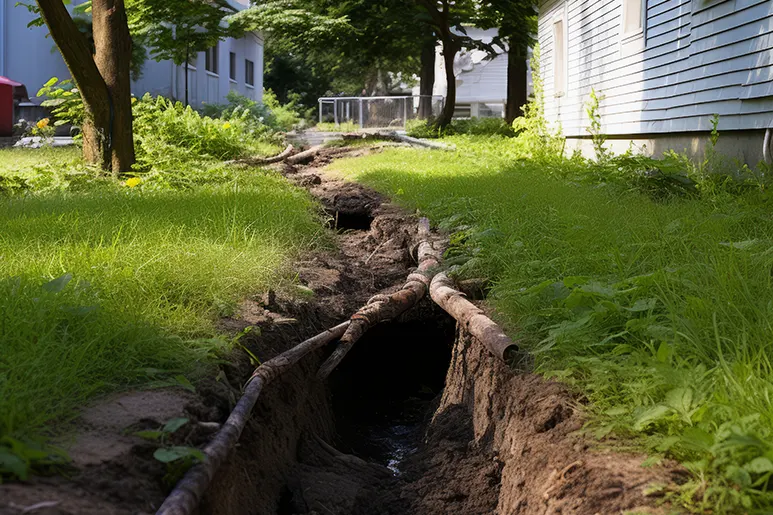
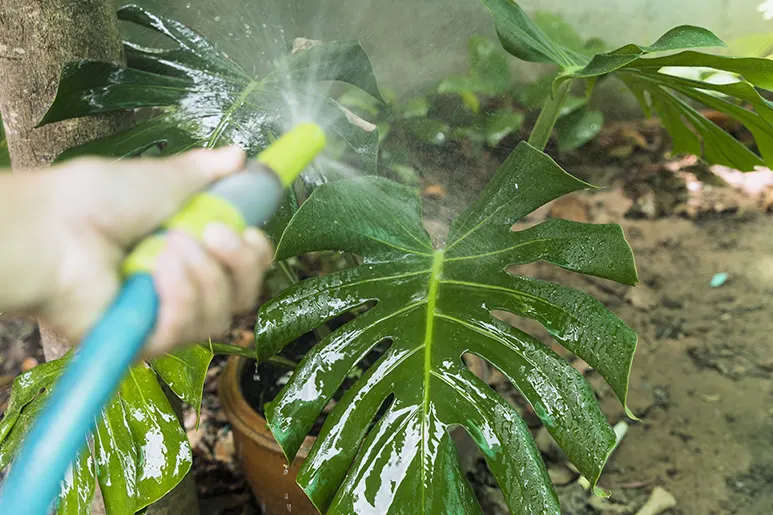
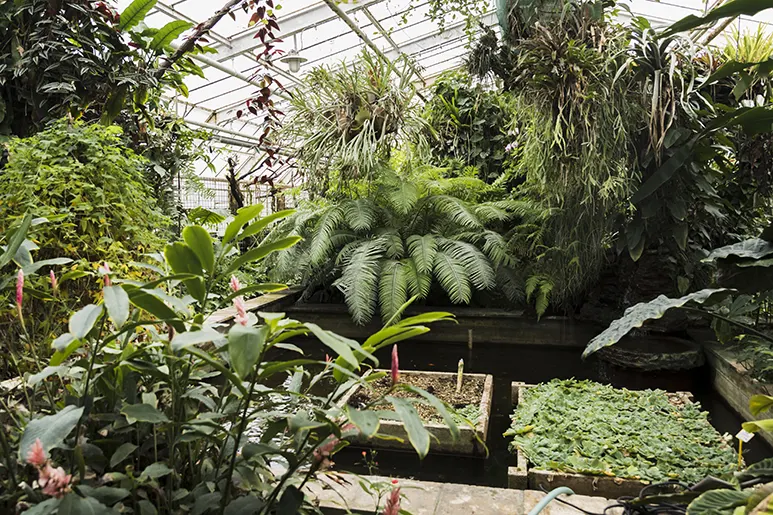
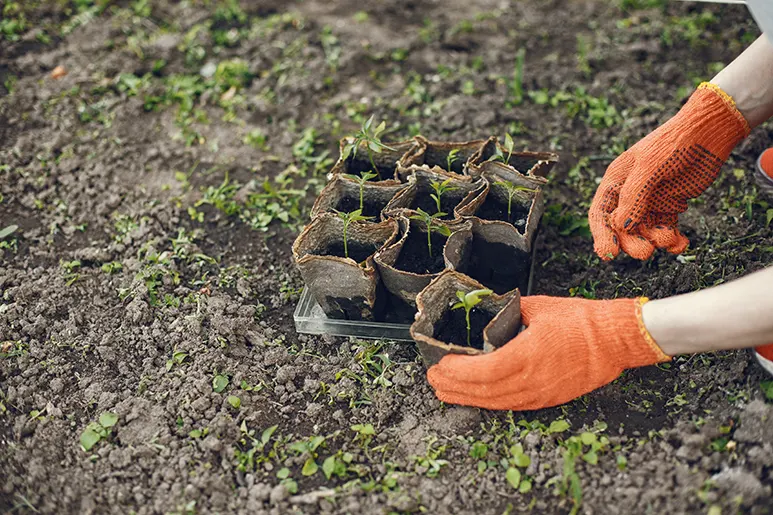
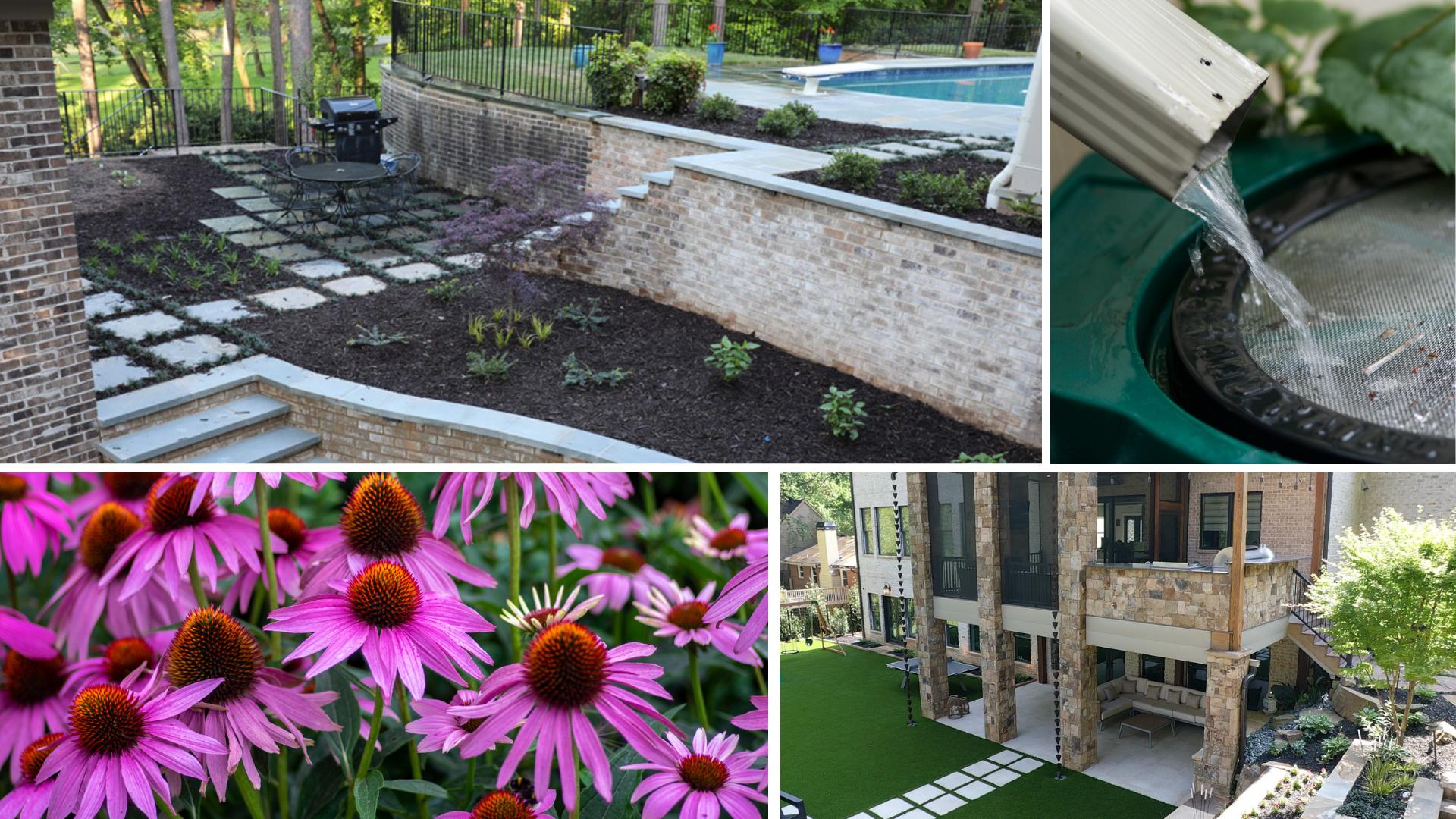 Fall into Sustainability: Eco-Friendly Landscaping Ideas for November
Fall into Sustainability: Eco-Friendly Landscaping Ideas for November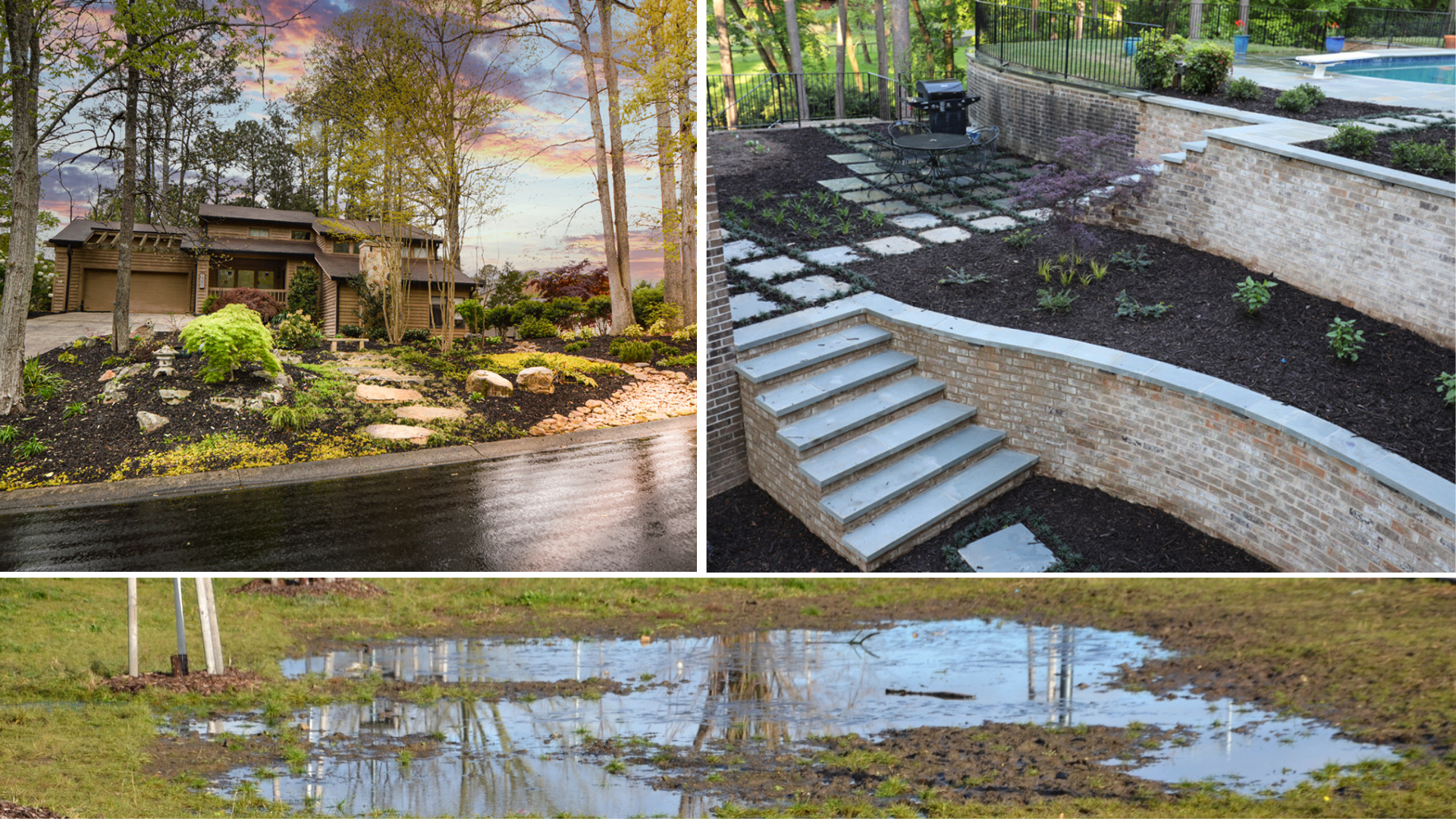 Protect Your Paradise: Solutions for Managing Drainage and Erosion in Your Yard
Protect Your Paradise: Solutions for Managing Drainage and Erosion in Your Yard Sustainable Beauty: Embracing Xeriscape Landscaping for Water-Efficient Gardens
Sustainable Beauty: Embracing Xeriscape Landscaping for Water-Efficient Gardens
LET'S BE SOCIAL: